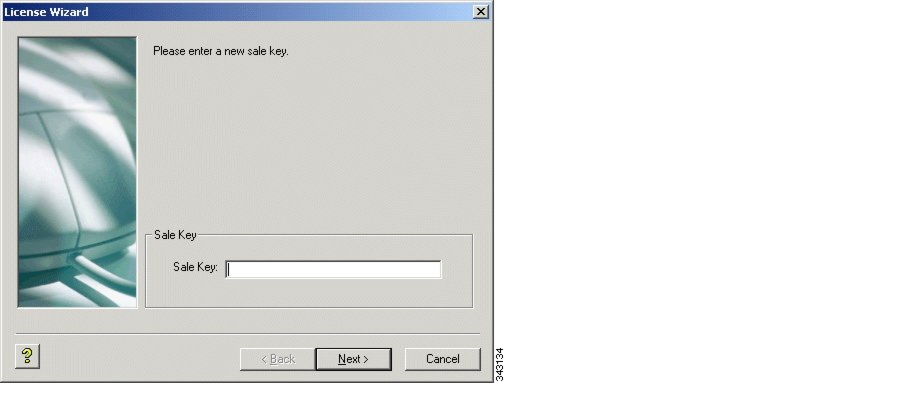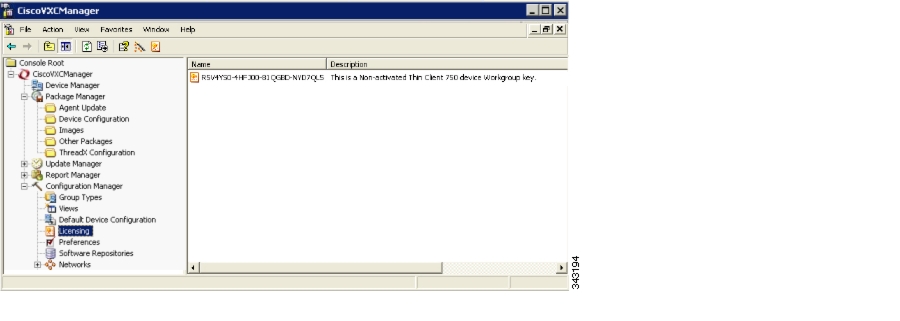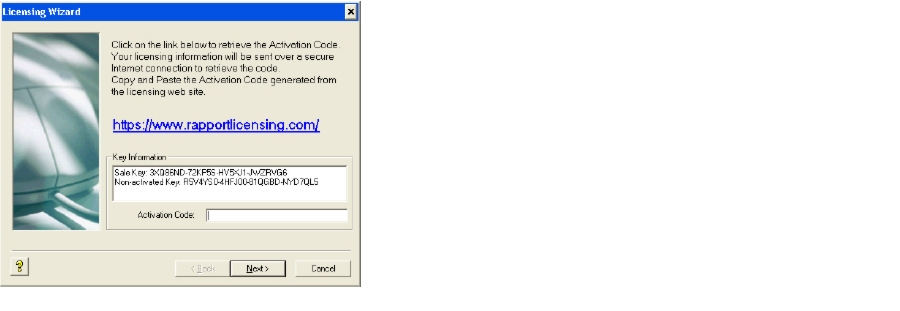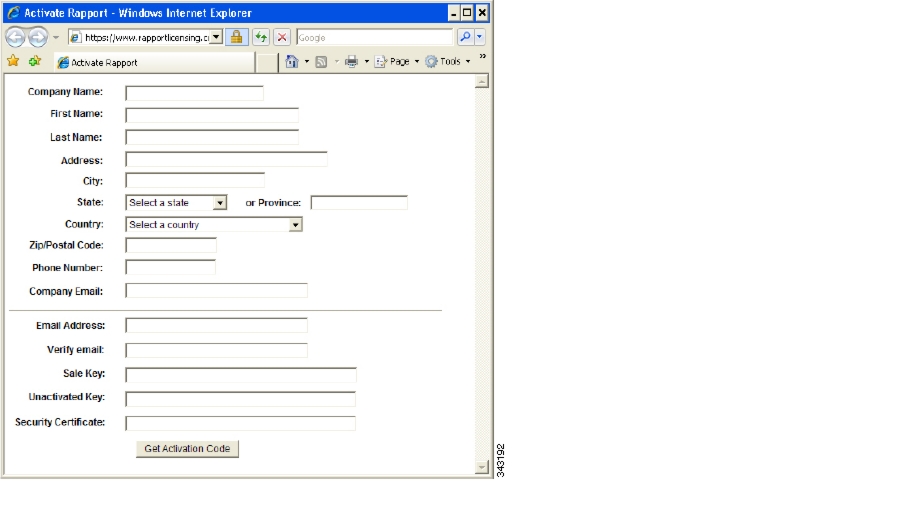

-
Administration Guide for Cisco Virtualization Experience Client Manager 4.9
-
Preface
-
Getting Started
-
Device Manager
-
Package Manager
-
Cisco VXC Firmware and Configuration Upgrade Procedures
-
Update Manager
-
Report Manager
-
Configuration Manager
-
Appendix A: Working with Groups and Views
-
Appendix B: About Cisco VXC Manager Security
-
Appendix C: Upgrading Cisco VXC Manager Agents
-
Appendix D: Device Discovery, Device Imaging, and Mass Imaging Tool
-
Appendix E: Troubleshooting
-
Appendix F: Licensing and Sales Keys
-
Appendix G: Additional Package Manager Procedures
-
Appendix H: Cisco VXC Manager ScriptBuilder Tool and Scripting Language
-
Appendix I: Autogenic Imaging
-
Table Of Contents
Managing Licenses and Certificates
Managing Cisco VXC Manager Sales Keys
Deleting Cisco VXC Manager Sales Keys
Licensing and Sales Keys
This appendix provides information on Cisco VXC Manager licensing. It includes the detailed steps to activate Sales Keys.
Note
Cisco VXC Manager does not require license keys to manage Cisco VXC clients. This section applies only to third-party products that may require licenses to interoperate with Cisco VXC Manager.
Managing Licenses and Certificates
Cisco VXC Manager allows you to manage licenses and certificates.
For information on tracking certificate expirations, see Using the Certificate Expiration Tracker.
Managing Cisco VXC Manager Sales Keys
Cisco VXC Manager allows you to view, add, upgrade, and delete Sales Keys as needed.
Viewing Sales Key Details
In the tree pane of the Administrator Console, expand Configuration Manager, click Licensing, right-click on the Sales Key you want to view, and then choose Properties to display the license details.
Adding Sales Keys
Procedure
Step 1
In the tree pane of the Administrator Console, expand Configuration Manager, right-click Licensing, and choose New > License to open the License Wizard.
Figure F-1 Add License Wizard
Step 2
Enter (or copy-and-paste) the Sales Key for the license you want to add, and click Next to open the success page.
Step 3
Click Finish to open the Licensing details pane displaying your new Non-activated Cisco VXC Manager Sales Key.
Step 4
Activate this Sales Key by completing the procedures in Activating Your Sales Key.
Activating Your Sales Key
CautionBe sure to perform the activation (enter an Activation Code) on the server to which you installed the Administrator Console (MMC Snap-in).
Use the following guidelines:
Procedure
Step 1
On the desktop of the server on which you installed the Administrator Console (MMC Snap-in), double-click the Cisco VXC Manager icon to open the Cisco VXC Manager Administrator Console.
Step 2
In the tree pane, expand Configuration Manager and choose Licensing to show the Non-activated Cisco VXC Manager Sales Key in the details pane.
Tip
If your Sales Key is already activated (displays as Activated), you can stop at this step.
Figure F-2 Cisco VXC Manager Administrator Console - Licensing
Step 3
Right-click the Non-activated Cisco VXC Manager Sales Key and choose Activate to open the Licensing Wizard.
Figure F-3 Licensing Wizard
Step 4
Note your Sales Key and Non-activated Key numbers as you will use them in the online Cisco VXC Manager licensing form.
Tip
If the server on which you installed the Administrator Console (MMC Snap-in) has internet access, you can copy-and-paste the Sales Key and Non-activated Key numbers from the Key Information area of the Licensing Wizard into the online Cisco VXC Manager licensing form.
Step 5
On a server which has internet access, use your browser to open the online Cisco VXC Manager licensing form at: https://www.rapportlicensing.com/clientframe/rapport.aspx.
Figure F-4 Licensing form
Step 6
Enter the information to complete the form (be sure to use the correct Sales Key and Non-activated Key numbers, and enter uppercase B for Security Certificate).
Step 7
After completing the form, click Get Activation Code to display the Activation Code (an e-mail containing the Activation Code is also sent to the Email Address you provided).
Step 8
In the Licensing Wizard on the server to which you installed the Administrator Console (MMC Snap-in), enter (or copy-and-paste) the Activation Code into the Activation Code field, and then click Next to open the details pane displaying your Sales Key as Activated.
Deleting Cisco VXC Manager Sales Keys
In the tree pane of the Administrator Console, expand Configuration Manager, click Licensing, right-click on the Sales Key you want to delete, choose Delete, and then click Yes to confirm.

 Feedback
Feedback





